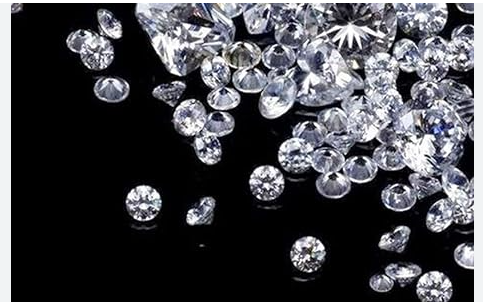
In a world where conscious consumerism is gaining momentum, the marriage of eco-conscious initiatives and the allure of diamonds takes center stage. The World Wildlife Fund WWF and lab grown diamonds are emerging as powerful partners in reshaping the landscape of the diamond industry. This article delves into the collaborative efforts of WWF and the rising trend of lab-grown diamonds, exploring their combined impact on sustainability, ethics, and the timeless beauty of these exquisite gems.
The WWF, renowned for its global conservation efforts, has extended its influence to unexpected realms. Teaming up with the diamond industry might seem like an unconventional alliance, but it aligns with a broader vision of sustainability. Diamonds, traditionally associated with environmental concerns and ethical issues surrounding mining practices, are undergoing a transformative journey thanks to the conscientious endeavors of organizations like WWF.
Lab-grown diamonds, often referred to as “lab diamonds,” are at the forefront of this revolution. These diamonds are created in controlled environments, free from the environmental and ethical challenges associated with traditional diamond mining. Utilizing cutting-edge technology, labs replicate the natural diamond-growing process, producing gems that are chemically, physically, and optically identical to their mined counterparts. This innovation not only addresses ethical concerns but also reduces the carbon footprint traditionally associated with diamond mining.
The collaboration between WWF and lab-grown diamonds is rooted in a shared commitment to sustainability. As environmental stewards, WWF has been actively involved in ensuring that the diamond industry adopts practices that align with conservation goals. Lab diamonds, being a more environmentally friendly alternative, naturally align with WWF’s mission to preserve the planet’s biodiversity and reduce the impact of human activities on the environment.
Lab diamonds, sometimes called cultured diamonds, are created using two primary methods: High Pressure High Temperature (HPHT) and Chemical Vapor Deposition (CVD). These methods mimic the conditions under which natural diamonds form, allowing for the creation of diamonds that are indistinguishable from those mined from the earth. The controlled setting of the lab ensures minimal ecological disruption, making lab diamonds a compelling choice for environmentally conscious consumers.
The ethical implications of traditional diamond mining have long been a point of contention. Blood diamonds, also known as conflict diamonds, have funded armed conflicts in Africa, leading to human rights abuses and environmental degradation. Lab-grown diamonds, being free from these ethical concerns, provide consumers with a guilt-free option for adorning themselves with these timeless gems.
Beyond ethical considerations, lab diamonds also offer a level of transparency that is often lacking in the traditional diamond industry. With a clear understanding of the diamond’s origin and production process, consumers can make informed choices that align with their values. This transparency resonates with the principles championed by WWF, fostering a partnership that aims to redefine the narrative around diamonds and environmental responsibility.
As consumer awareness grows, so does the demand for sustainable alternatives. The synergy between WWF and lab-grown diamonds is paving the way for a new era in the diamond industry. This partnership emphasizes the importance of making responsible choices without compromising on luxury and beauty. The brilliance of lab diamonds, both in terms of aesthetics and sustainability, positions them as a shining example of how innovation and environmental consciousness can coexist harmoniously.
In conclusion, the collaboration between WWF and lab-grown diamonds represents a significant stride toward a more sustainable and ethical future for the diamond industry. As consumers increasingly prioritize eco-friendly choices, the marriage of environmental advocacy and lab-grown diamonds offers a compelling narrative of responsible luxury. The WWF and lab diamonds are not just reshaping an industry; they are redefining the standards of beauty and ethics, proving that brilliance can indeed be sustainable.

